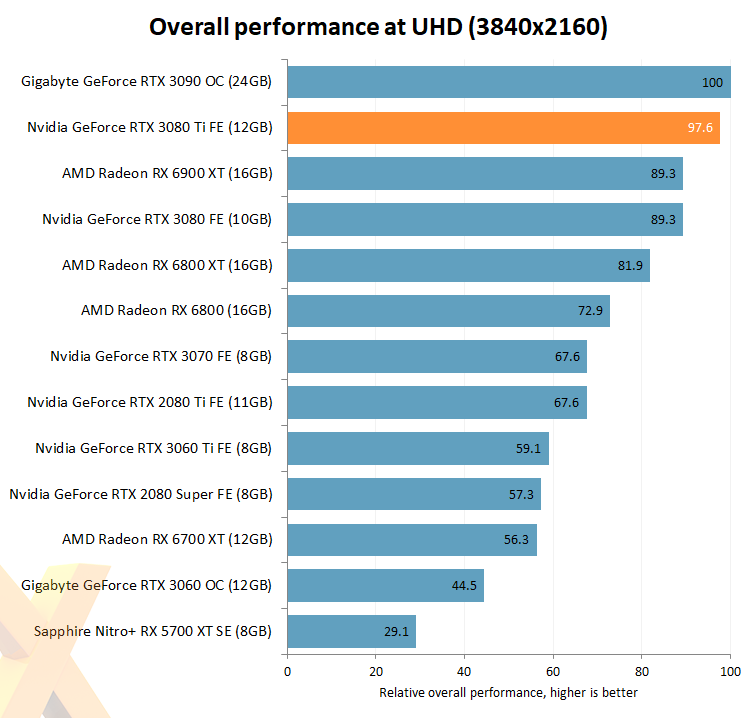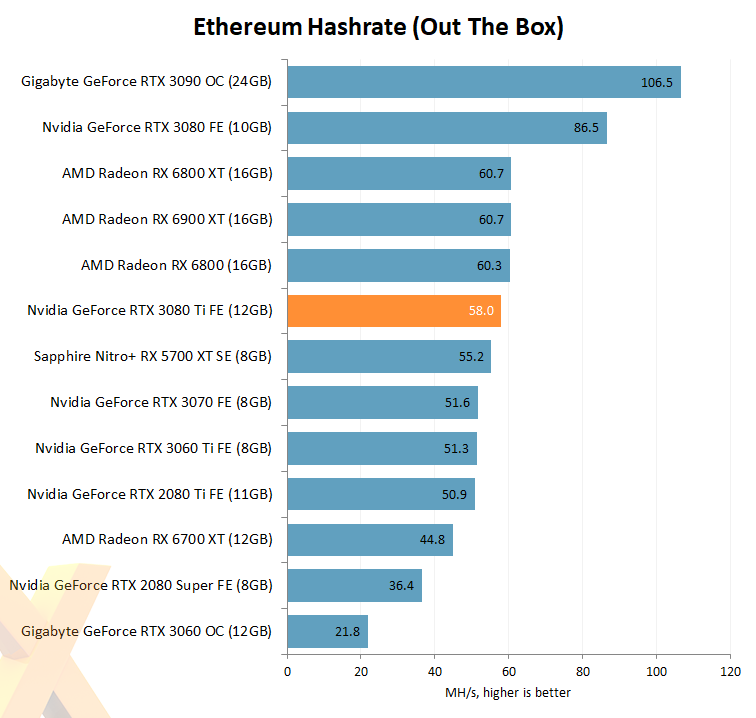Overall Performance, Energy Efficiency, Mining
Looking at the relative 4K performance of each card, normalised to the GeForce RTX 3090, across five rasterisation-only and two rasterisation-and-raytracing titles, gives greater insight into how everything really stacks up from a performance perspective.

We reckoned the RTX 3080 Ti would get close to the RTX 3090. It does indeed, providing 97.6 per cent of its performance and thereby ensuring it's practically identical to the chief gaming proposition.
The Radeons are hurt by mediocre performance in Watch Dogs: Legion, though they do well enough in DiRT 5.

We take the normalised performance here and then divide the score by the reported system-wide power consumption, leading to a rudimentary energy-efficiency metric. GeForce RTX 3080 Ti pulls more wattage than RTX 3080 but it's faster by a greater margin. 350W TGP is acceptable for this level of performance.

We further ran each card through a five-minute Ethereum hashing benchmark - Phoenix Miner 5.6d - to see how Nvidia's new limiting strategy plays out.
These figures represent the out-the-box hash rates that can be further tuned for performance and power. As is, the RTX 3080 Ti FE benchmarks at only 58MH/s, which is almost half the speed of RTX 3090 and substantially slower than than regular RTX 3080 FE. This is a deliberate software limitation rather than a hardware issue, made to ensure these cards are less appealing to the hordes of crypto miners out there. We wonder how long will it be until someone mods the driver to avail full-speed support.









